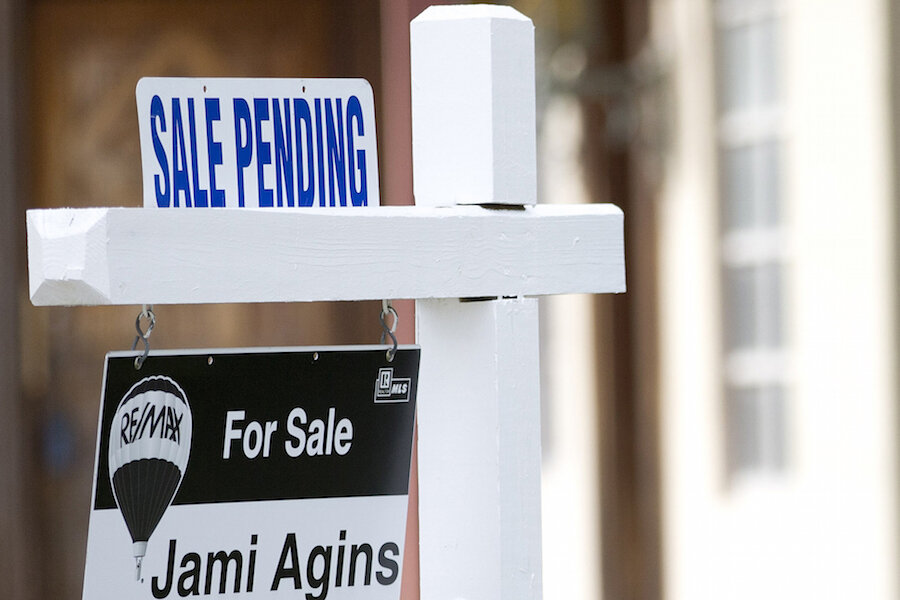What does President Trump really mean for mortgage rates?
Loading...
In the week following the election, mortgage rates soared nearly half a percentage point. Average weekly 30-year fixed home loan rates are back above 4% for the first time since July 2015.
Here’s a three-minute read on the Trump Effect — past, present and future — on mortgage rates.
What happened to mortgage rates right after the election
Investors sold bonds on President-elect Donald Trump’s stated goals to lower taxes, boost deregulation and make massive infrastructure investments. A growing economy fueled by government spending could trigger higher inflation, which is a concern for the bond market.
As bond prices fell from the sell-off, yields rose. Higher bond yields equal higher mortgage rates.
What is happening with mortgage rates now
Rates are already taking a breath. After a quick run-up following the election, 30-year mortgage rates are generally holding steady, near 4%.
What will happen to mortgage rates in 2017
The Federal Reserve this week reaffirmed its intention to begin raising short-term interest rates, most likely beginning in December. Following that hike, if it happens, the U.S. central bank’s policy-setting Federal Open Market Committee is looking to manage a slow climb in rates.
“The FOMC continues to expect that the evolution of the economy will warrant only gradual increases in the federal funds rate over time to achieve and maintain maximum employment and price stability,” Fed Chair Janet Yellen told Congress on Nov. 17. Those moves will influence longer-term rates such as on mortgages to rise as well.
And there’s another potential trigger for mortgage rates to move higher.
While Trump hasn’t taken a stance yet, Republican party leaders have been vocal about getting the government out of the mortgage business. That could mean redefining the role of the Federal Housing Administration and moving Fannie Mae and Freddie Mac to the private sector.
David Reiss, a professor at Brooklyn Law School, concentrates on real estate finance and community development. He sees the Republican agenda to “reduce the government’s footprint in the mortgage market” as a possible catalyst to higher mortgage rates in the future.
“You put the government’s stamp of approval on companies like Fannie and Freddie, and it lowers interest rates because they can borrow at a lower rate — but then the taxpayers are on the hook if things go south, and that was the case in 2008,” Reiss tells NerdWallet. “If you reduce the federal government’s role in the housing markets, you’re going to reduce the likelihood of future bailouts by taxpayers. That’s the trade-off.”
How high will rates go in the coming year?
“I think you could see rates a half a percent higher from where they are now,” says Brian Koss, executive vice president of Mortgage Network in Danvers, Massachusetts. “There’s potential for three-quarters to a full point higher.”
“We’re not jumping to rapid conclusions in our forecast scenario,” Douglas Duncan, chief economist of Fannie Mae, tells NerdWallet. “Right now, we’ve got mortgage rates for 2017 averaging below what the actual numbers are today.”
Duncan says Fannie Mae’s November forecast is for 30-year rates to average 3.6% in 2017.
Mortgage rates in 5 years
Ten-year Treasury yields, a commonly used benchmark for mortgage rate trends, have soared in the past week, currently yielding about 2.25%. Mortgage rates have mirrored that rise.
Noted bond investor Jeffrey Gundlach, founder and chief investment officer of DoubleLine Capital, predicted Trump’s victory in January. In a conference call with investors on Nov. 15, Gundlach made another bold forecast: 10-year Treasury yields could be 6% within five years.
In July 2000 — the last time 10-year Treasury yields were at 6% — 30-year mortgage rates were just above 8%.
Perhaps it’s a worse-case scenario, but 8% would put us back to the average mortgage rate for the past 44 years.
Hal Bundrick is a staff writer at NerdWallet, a personal finance website. Email: hal@nerdwallet.com. Twitter: @halmbundrick.
This article first appeared in NerdWallet.







